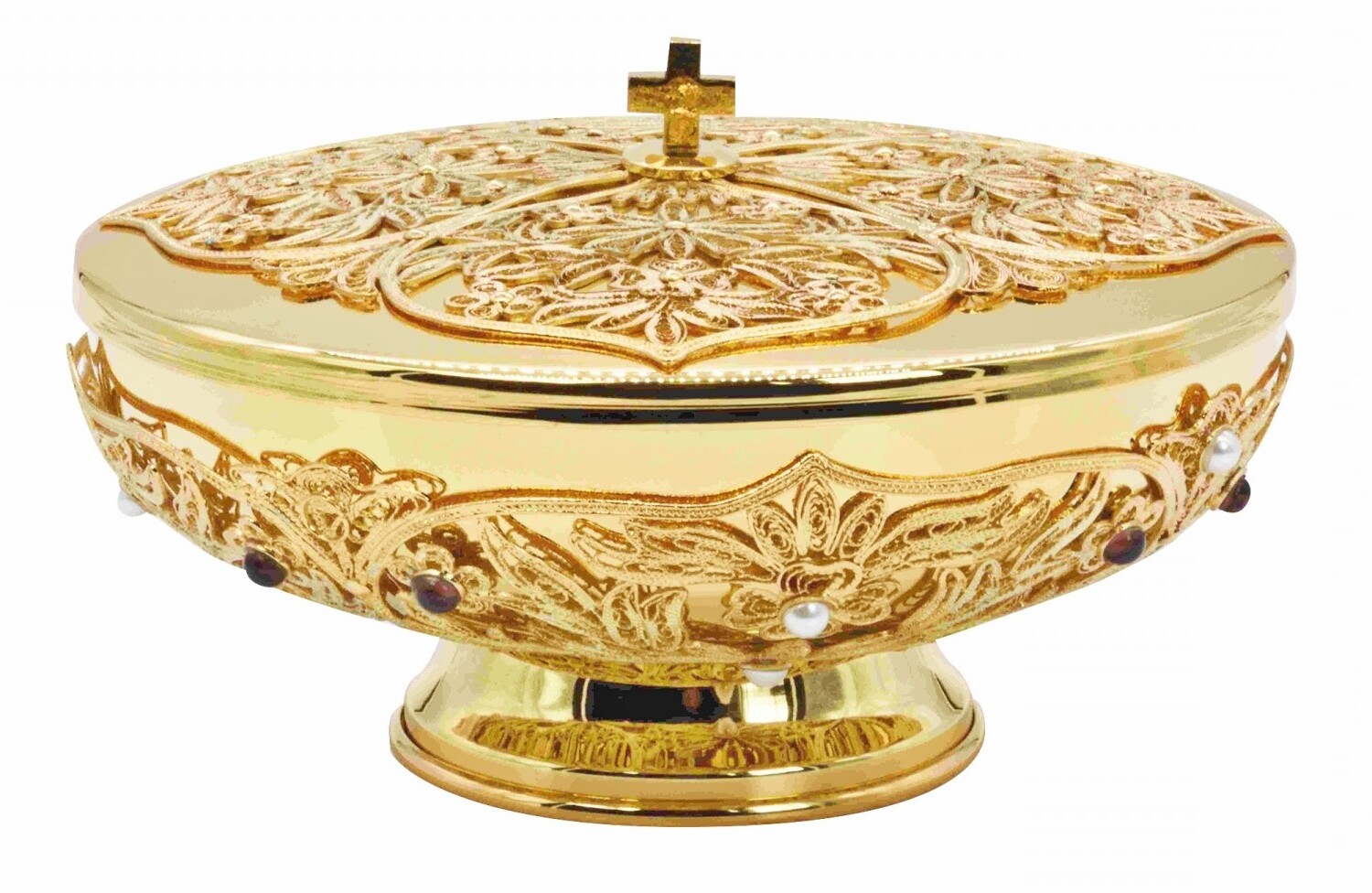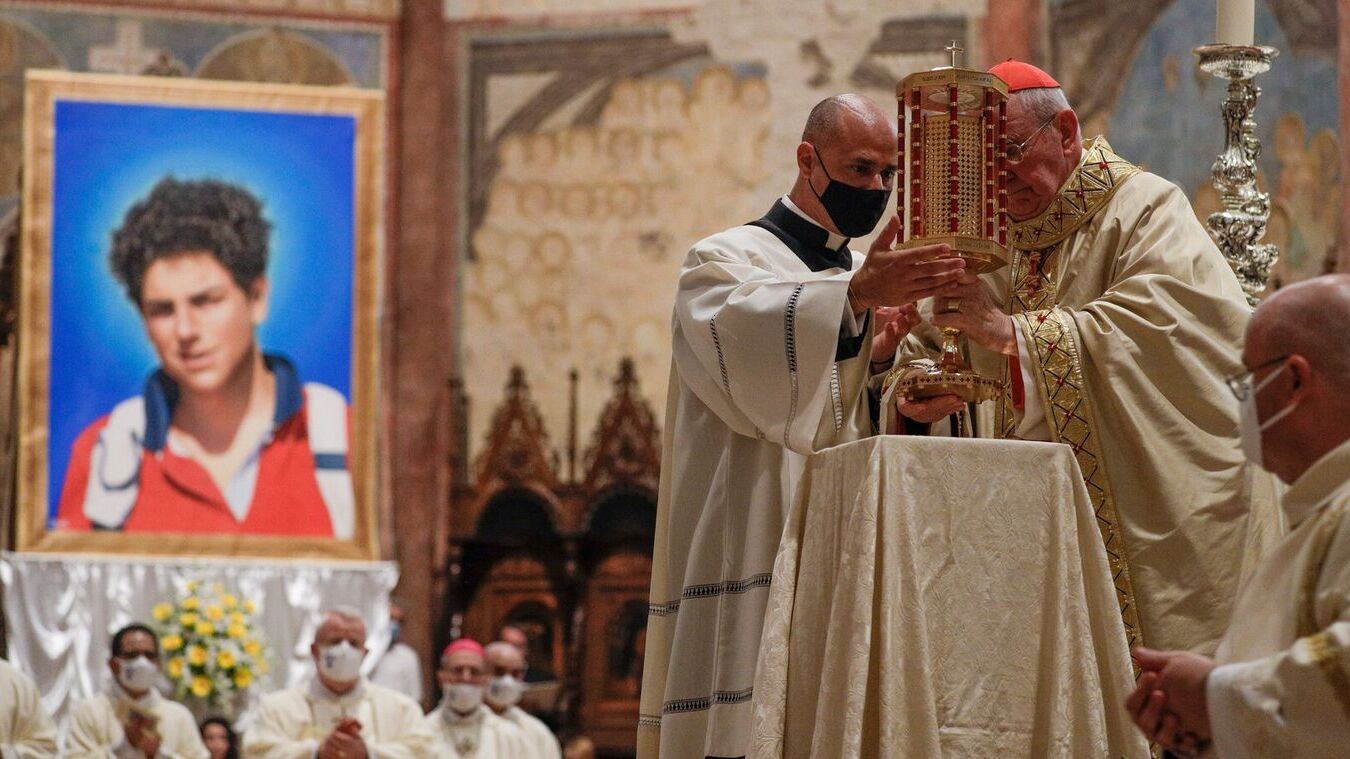
What is a ciborium? A ciborium is a sacred vessel used in Christian liturgy to hold the consecrated Eucharistic bread. Often made of precious metals, it resembles a chalice but has a lid. The lid signifies the importance of its contents, protecting the Eucharist from contamination. Ciboria come in various designs, some simple, others ornate, reflecting the artistry and devotion of their creators. They play a crucial role during Mass, especially in Catholic and Orthodox traditions. Understanding the ciborium's significance helps appreciate its role in worship and its rich history. Let's dive into 30 intriguing facts about this revered liturgical item.
What is a Ciborium?
A ciborium is a religious vessel used in Christian liturgy. It holds the consecrated Eucharistic bread. Often made of precious metals, it has a lid to protect the contents. Let's dive into some fascinating facts about this sacred object.
-
The word "ciborium" comes from the Greek word "kibōrion," meaning a cup or chalice.
-
Ciboria are typically made of gold or silver, symbolizing the precious nature of the Eucharist.
-
The lid of a ciborium often features a cross or other religious symbols.
-
In the Roman Catholic Church, the ciborium is usually kept in the tabernacle when not in use.
-
The design of a ciborium can vary, but it often resembles a chalice with a larger bowl.
Historical Significance of the Ciborium
The ciborium has a rich history, deeply rooted in Christian traditions. Its evolution over centuries reflects changes in liturgical practices and artistic styles.
-
Early ciboria were simple bowls, evolving into more elaborate designs over time.
-
During the Middle Ages, ciboria became more ornate, reflecting the church's growing wealth and influence.
-
Some ciboria from the Renaissance period are considered masterpieces of religious art.
-
The use of ciboria became more widespread after the Council of Trent in the 16th century.
-
In Eastern Orthodox churches, the equivalent of a ciborium is called a "pyx."
Symbolism and Meaning
The ciborium is not just a container; it holds deep symbolic meaning in Christian worship. Each element of its design carries significance.
-
The lid represents the protection of the sacred Eucharist.
-
The use of precious metals signifies the value and reverence of the sacrament.
-
The cross on the lid symbolizes Christ's sacrifice.
-
The shape of the ciborium, often resembling a chalice, connects it to the Last Supper.
-
The ciborium's design can also reflect the artistic style of the period in which it was made.
Usage in Liturgy
The ciborium plays a crucial role in various liturgical ceremonies. Its use is governed by specific rules and traditions.
-
During Mass, the ciborium is used to distribute the Eucharist to the congregation.
-
It is also used during Eucharistic adoration and benediction.
-
The ciborium must be blessed by a priest before it can be used in liturgy.
-
When not in use, the ciborium is stored in the tabernacle, a special cabinet in the church.
-
The ciborium is often covered with a veil when placed in the tabernacle, symbolizing the mystery of the Eucharist.
Artistic and Cultural Impact
Beyond its religious significance, the ciborium has influenced art and culture. Its design and craftsmanship reflect broader artistic trends.
-
Many ciboria are considered works of art, showcasing the skills of goldsmiths and artisans.
-
Some ciboria are adorned with gemstones and intricate engravings.
-
The design of ciboria has inspired other religious and secular vessels.
-
Museums and collections often feature historical ciboria as examples of religious art.
-
The craftsmanship of ciboria reflects the cultural and artistic values of the time and place they were made.
Modern Ciboria
Today, ciboria continue to be an essential part of Christian worship. Modern designs blend tradition with contemporary aesthetics.
-
Modern ciboria are often simpler in design, reflecting contemporary liturgical trends.
-
Some churches commission custom ciboria to reflect their unique identity and heritage.
-
The use of alternative materials, such as stainless steel, is becoming more common.
-
Despite changes in design, the symbolic and liturgical significance of the ciborium remains unchanged.
-
Modern ciboria continue to be crafted with care and reverence, maintaining the tradition of excellence in religious art.
Final Glimpse at Ciborium Facts
Ciboriums, often overlooked, hold a rich history and cultural significance. These sacred vessels, used in religious ceremonies, showcase intricate designs and craftsmanship. Made from various materials like gold, silver, and brass, they symbolize reverence and tradition. Their origins trace back to ancient times, evolving in design and purpose over centuries. Today, ciboriums remain vital in many religious practices, embodying both spiritual and artistic value.
Understanding these facts about ciboriums not only deepens appreciation for their role in religious contexts but also highlights the artistry involved in their creation. Whether you're a history buff, an art enthusiast, or someone curious about religious artifacts, these insights offer a fascinating glimpse into the world of ciboriums. So next time you encounter one, you'll know the story behind its beauty and significance.
Was this page helpful?
Our commitment to delivering trustworthy and engaging content is at the heart of what we do. Each fact on our site is contributed by real users like you, bringing a wealth of diverse insights and information. To ensure the highest standards of accuracy and reliability, our dedicated editors meticulously review each submission. This process guarantees that the facts we share are not only fascinating but also credible. Trust in our commitment to quality and authenticity as you explore and learn with us.


